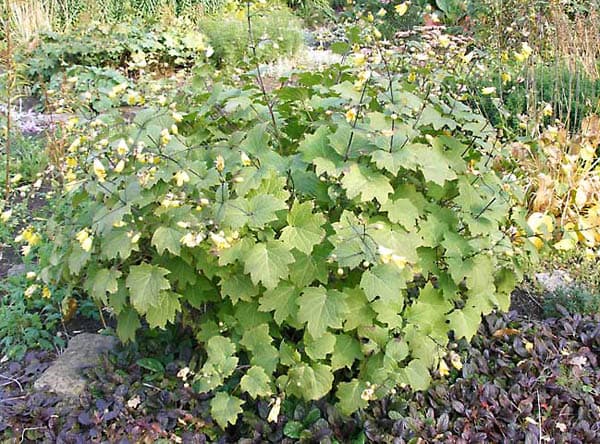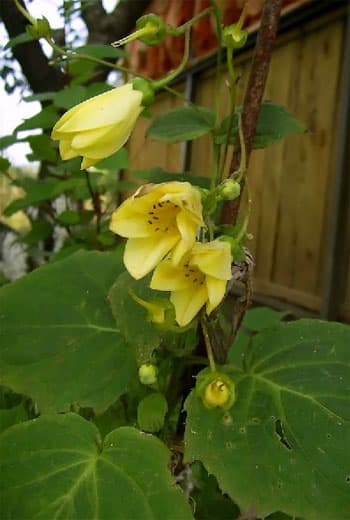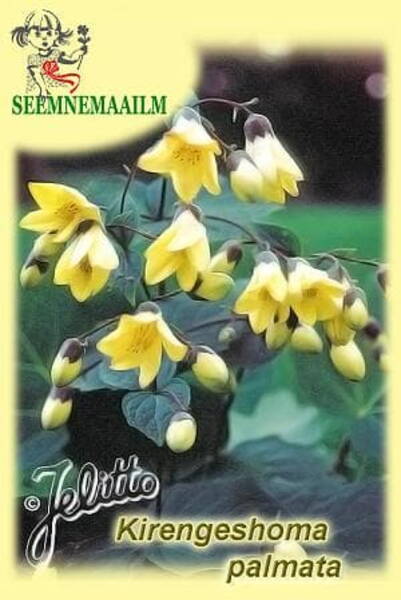Your shopping cart is empty!
Yellow Wax Bells
Yellow Wax Bells - Kirengeshoma palmata.
Family: Hydrangeaceae.
Flowering plant height: 60-90 cm.
Natural flowering period: August – October.
Use: good for cutting.
Winter hardiness zones: Z5 – Z8.
1.0 g = 450 seeds.
Homeland: Japan. On mountain slopes and beech forests with humid air and a lot of ferns.
Lush shrub with graceful waxy inflorescences. The rhizome is dense, powerful, superficial.
Growth habit: bushy, straight.
Leaf: large, similar to a maple leaf, light to yellowish green.
The inflorescences are light yellow, wide, collected in soft, hanging branches.
Location: grows in a slightly shaded, semi-shaded, cool place with moist air.
Soil: fresh, moist, acidic, rich in humus and nutrients. No dense soils!
Care: cut in autumn. It does not require transplantation for many years, but tolerates it easily. Winter-hardy without shelter.
Diseases and pests: protect from snails.
Reproduction: by division in spring at the beginning of growth or by root and stem cuttings. It does not have time to set seeds in the conditions of the Estonia. If it is necessary to grow from seeds, the only difficulty is small, slowly developing seedlings. Flowering occurs in 3-4 years.
Application: in the partial shade of trees and walls. Good for planting in mixborders and as a dominant plant on a shady rocky hill.
Partners: goes well with Hosta, Rogersia and Cimicifuga.

Family: Hydrangeaceae.
Flowering plant height: 60-90 cm.
Natural flowering period: August – October.
Use: good for cutting.
Winter hardiness zones: Z5 – Z8.
1.0 g = 450 seeds.
Homeland: Japan. On mountain slopes and beech forests with humid air and a lot of ferns.
Lush shrub with graceful waxy inflorescences. The rhizome is dense, powerful, superficial.
Growth habit: bushy, straight.
Leaf: large, similar to a maple leaf, light to yellowish green.
The inflorescences are light yellow, wide, collected in soft, hanging branches.
Location: grows in a slightly shaded, semi-shaded, cool place with moist air.
Soil: fresh, moist, acidic, rich in humus and nutrients. No dense soils!
Care: cut in autumn. It does not require transplantation for many years, but tolerates it easily. Winter-hardy without shelter.
Diseases and pests: protect from snails.
Reproduction: by division in spring at the beginning of growth or by root and stem cuttings. It does not have time to set seeds in the conditions of the Estonia. If it is necessary to grow from seeds, the only difficulty is small, slowly developing seedlings. Flowering occurs in 3-4 years.
Application: in the partial shade of trees and walls. Good for planting in mixborders and as a dominant plant on a shady rocky hill.
Partners: goes well with Hosta, Rogersia and Cimicifuga.


Yellow Wax Bells.












